Born in the USA: Our Favorite American-Made Genres
The home of the Declaration of Independence, Coca-Cola and brostep, the US has a lot to celebrate this Fourth of July. While our European counterparts may think their dance music tastes reign supreme, let’s not forget the birthplace of it all: Chicago. From trap to Detroit techno to B more, electronic music has forged diverse homes throughout our country. Even though the sound may not always be the same, the motivation, creativity and groove behind them remain quintessentially American.
Here, we present our favorite American-made dance music genres.
West Coast/Funky Breaks
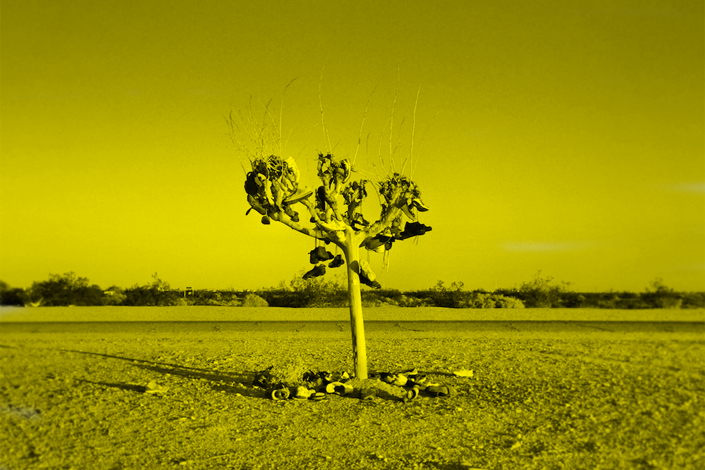
Place of Origin: Southern California
Notable Artists: Simply Jeff, Überzone, Bass Kittens, The Crystal Method, Bassbin Twins, Cirrus
History/Description: During the mid- to late-‘90s, while artists like Fatboy Slim and the Chemical Brothers were sowing the seeds of Big Beat in the UK, a different kind of broken-beat movement was cropping up on the West Coast of the United States. Sometimes the sound was space-age and robotic, calling on staple pieces of Roland gear like the TB-303, the TR-808, or the Jupiter-8; other times the dirty breaks were stitched together using old-school hip-hop grooves or a cappellas. But regardless of their distinct styles, they all had one common denominator: they were funky.
Championed by L.A.-based labels like City of Angels and Moonshine Music—and written about in L.A.-based publications like URB, Lotus and BPM, all of which were gaining prominence around the same time—West Coast funky breaks thrived everywhere from the warehouse to the desert, their sound peddled to the mainstream via DJs like John Kelley and Simply Jeff. It was arguably one of the most fertile times for West Coast rave culture, and the funky breaks were there to provide an unforgettable, uplifting and distinctive soundtrack. —Rich Thomas
Essential Tracks:
The DJ’s Project “Funk-da-Fried Party”
The Crystal Method “Busy Child”
Überzone “Moondusted”
Chicago House

Place of Origin: Chicago, IL
Notable Artists: Frankie Knuckles, Larry Levan, Ron Hardy, Mr Fingers, Robert Owens, Derrick Carter
History/Description: “In the beginning, there was Jack… and Jack had a groove.” Spoken by Chuck Roberts in 1987, these words fully encapsulate the historic Chicago house movement. But the birth of this bubbling scene started a decade earlier with the legendary DJ Frankie Knuckles and a brand new nightclub in Chicago’s South Side, called the Warehouse. Knuckles would man the wheels of steel for the entire night, mixing disco hits with new sounds like Eurobeat pop, and would eventually lay his own percussive layers over classic soul and funk records to maintain the 4×4 foundation throughout his sets.
A new style of music was born at the Warehouse; according to Knuckles, it was deeper and more raw than disco and certainly had the dancefloor in mind. In the mid 1980s, a flood of Chicago house records were shipped overseas and ended up dominating Europe’s club scene (especially Ibiza). A wave of DJs started spinning records like Farley “Jackmaster” Funk’s “Love Can’t Turn Around,” and it became the first record to cross over from the clubs and into the Top 10 on the UK singles charts.
Chicago House labels like DJ International, Trax and Dance Mania put out a furious amount of banging club tracks in the late 1980s, which eventually inspired the foundation of legendary New York house imprint Strictly Rhythm. These highly emotive tracks caused a global stir, and the experimentation in the nightclubs with mind-altering drugs, like acid and ecstasy, pushed the sounds even further. Phuture’s “Acid Tracks” paved the way for a new generation of music called “acid house”—which is currently enjoying a bit of a revival in 2015, with many producers using Roland’s TB-3 synth.
It’s not uncommon to hear top DJs sneaking these timeless records into their sets, and it is not without the vision of pioneers like Frankie Knuckles, Larry Levan and Ron Hardy that groups like Disclosure have found wild success with their straightforward club tracks like “Bang That.” The dance community was shattered last spring when Knuckles passed away at 59, but his vast catalog of music lives on and will continue to bring joy to people all over the world. —Troy Kurtz
Essential Tracks:
Frankie Knuckles “Your Love”
Farley Jackmaster Funk “Love Can’t Turn Around”
Fingers Inc. “Can You Feel It”
Miami Bass
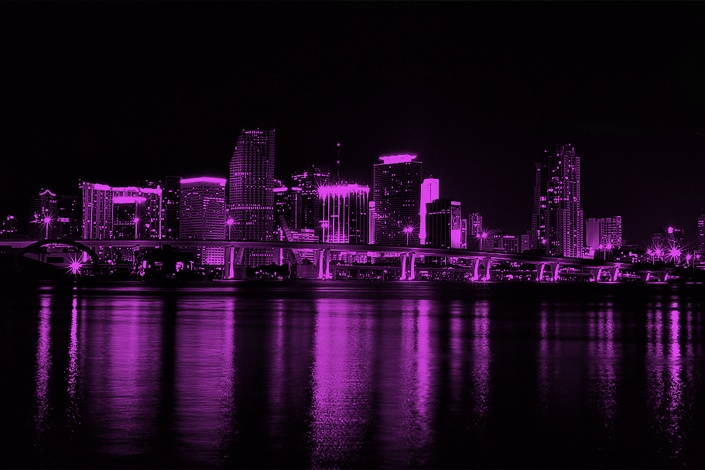
Place of Origin: Miami, FL
Notable Artists: 2 Live Crew, Uncle Al, Luke Skywalker, 69 Boyz, Quad City DJs, Freak Nasty, Poison Clan, Gucci Crew
History/Description: Miami bass, electro bass, booty music… we’re not exactly sure what to call it, but a lot of things wouldn’t even exist if it weren’t for the genre—including the Peanut Butter Jelly Time banana and this commercial. You can say there are several parts of Miami’s bass influence; a lot of it stemmed from freestyle music, Kraftwerk, Afrika Bambaataa’s electro-funk sound, and similar musicians such as Maggotron and MC A.D.E. But during all of this in the ‘80s, 2 Live Crew came along and really flipped the script.
After 2 Live Crew’s single “Throw That Dick” actually became a local hit, shit really hit the fan. Miami’s music became completely oversexed, and they were pretty much running from the law. Their second album, As Nasty as They Wanna Be, was responsible for that cute little Parental Advisory sticker that you see on most of the records you buy now. The man tried to shut them down completely, but they went to court and earned their First Amendment rights to sing about whatever they please. So really, they paved the way for a lot of “inappropriate music.”
After 2 Live Crew made national news, they put out this video to troll the court, and then eventually there were many groups in the Miami area to sing about T&A and teach certain dances like the Tootsie Roll and Da Dip. Uncle Al (RIP), the 69 Boyz, Tag Team, 95 South, Poison Clan and many more were put on the map. Luke Skywalker from 2 Live Crew was also the first person to put Trick Daddy and Pitbull on, so you can thank him for Mr. Worldwide as well.
You probably hear this music sampled all the time and don’t even realize it. A ton of early footwork and juke out of Chicago sampled Luke, French Montana’s “Pop That” and the majority of Pitbull’s early work. Miami Bass is everywhere, and dance music wouldn’t be the same without it. —Jubilee
Essential Tracks:
Luke “I Wanna Rock (Doo Doo Brown)”
Live Crew “Hoochie Mama”
DJ Uncle Al “The Uncle Al Song”
Juke / Footwork
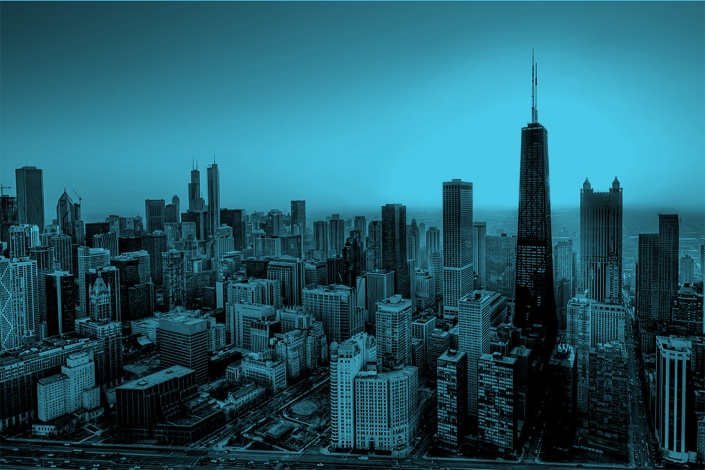
Place of Origin: Chicago, IL
Notable artists: DJ Rashed, R.P. Boo, DJ Spinn, Traxman, Boylan
History/Description: Some of the most energetic and original music of the dance world has come from the underground in poorer, urban areas, often not wholly connected to the larger sphere. Prime examples of this ingenuity are Baltimore Club, Philly Club, Jersey Club, Baile Funk, and, of course, added to that list would have to be Chicago’s explosive Footwork scene.
Starting all the way back in the late 80’s, the fast and furious Juke genre swept the dance world of Chicago with its energetic feel, and body moving bounce. Typically hovering at 160 bpm, and utilizing shuffling, old-school drum machine beats, it was a truly organic and original sound. By the early 2000’s however, producers such as R.P. Boo began shifting it, stylistically, to a more low-end, complex, and hyper-active style. Now called “Footwork”, this evolution matched the intensity of the dance battlers it was named after.
With something as fresh as this, Footwork could only be confined to the deeply impressive and competitive dance bouts of Chicago’s underground for so long. Progressive movements, such as the bourgeoning Future Bass community would latch on to this current. Most of the now classic tracks would see the broader world in the form of Planet Mu’s Bangs & Works vol. 1 and 2 (2010, 2011). Catching fire, Footwork would soon rise to international fame both through its originators, and new dabblers such as Africa HiTech, “Phillip D Kick”, and Om Unit.
Despite the very sad news of one of Footwork’s core leaders, DJ Rashad, passing in 2014, today the genre is bigger than ever. Even larger names in the dance world are toying with the sound, but the core movement is also standing strong thanks to crews like Tek Life. Artists such as DJ Spinn continue to play to large and wildly passionate crowds. Just as Juke led to Footwork, the style is ever shifting, (an early modern variant being “Jungle-Juke”), however the heart and soul will live on just as notably as when it started. –Denman C. Anderson
Essential Tracks:
RP Boo “Off Da Hook”
DJ Rashad “Ghost”
DJ Spinn & Taso “Burn That Kush”
Moombahton
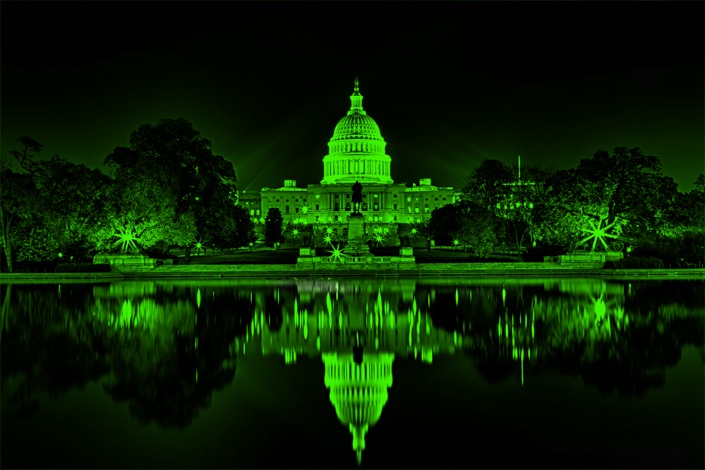
Place of Origin: Washington, D.C.
Notable Artists: Dave Nada/Nadastrom, Munchi, (early) Dillon Francis, Sazon Booya, David Heartbreak, Sabo
History/Description: The fable-like birth of moombahton is reason alone to follow the genre. It all started with one party, one song. As the story goes, Dave Nada, one half of Nadastrom, who would later become the chief pioneer and aural engineer of the sound, was spinning his cousin’s high school ditch party. The techno and electro house bangers he was armed with completely disrupted the party’s soundtrack, which was composed of reggaeton and bachata, two Latin-fueled genres. To avoid completely killing the vibes, Nada threw down the Afrojack remix of “Moombah” from Silvio Ecomo and Chuckie. The trick: He slowed down the track to a sluggish 108 BPM. The kids ate it up, and moombahton was born.
Much like its name, moombahton—a portmanteau combining the aforementioned track “Moombah” and reggaeton—meshes the best of two very distinct worlds into one unique sound: the mainstage appeal of dirty Dutch house and the slowed-down dancefloor sexiness of reggaeton. It was this perfect formula that brought festival kids to the clubs and club kids to the festivals. The cultural midpoint of moombahton allowed fans of all ethnicities, creeds and backgrounds to enjoy a type of electronic music that was both ethnic-sounding yet accessible to a general audience.
As with most niche electronic genres, moombahton was initially driven by internet culture, which launched its spike in popularity and perhaps caused its eventual fall. Producers from around world took notice of the sound and jumped aboard, the most notable being Dutch producer Munchi. From there, huge support came from the biggest artists in electronic music, including Skrillex, Dillon Francis, and the most vocal supporter of all, Diplo, whose Mad Decent imprint released Dave Nada Presents Moombahton as part of their Blow Your Head compilation series. Though support from these giants helped propel the rise of moombahton, it didn’t have the lasting effect of sibling genre trap. While moombahton still makes the occasional rounds in the club and festival circuits, its star has unfortunately faded. —John Ochoa
Essential Tracks:
Dave Nada “Moombahton”
Munchi “Sandungueo”
Dillon Francis “Masta Blasta”
B More
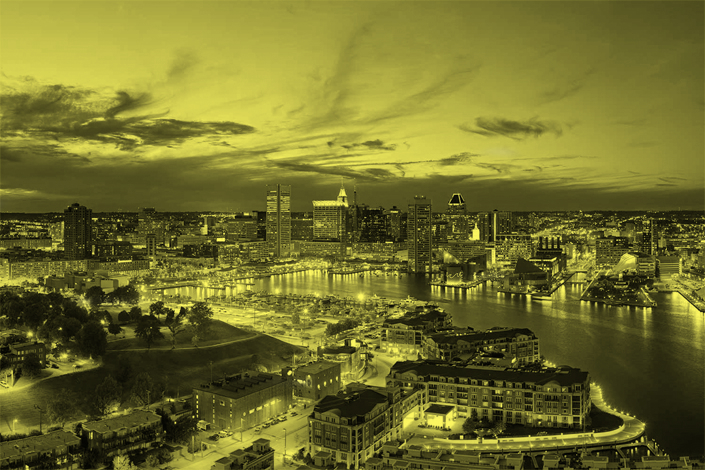
Place of Origin: Baltimore, MD
Notable Artists: Scottie B, Rod Lee, James Nasty, Tittsworth, Shawn Caesar, DJ Equalizer
History/Description: In spite of (or, perhaps, because of) its history of struggle, Baltimore has a storied history of artists and musicians that dared to be different. The city’s offering to the dance world—fittingly dubbed “Baltimore club music” and often shortened to “Bmore”—was born as an American answer to British breakbeat hardcore, a hyper jumble of underground sounds that spoke directly to the body. The freakishly kinetic hybrid of breakbeats, house, hip-hop, and left-field samples started as an intensely regional sound in the late ‘80s, a secret handshake for Baltimore residents that complemented the city’s obsession with developing new dances.
Progenitors like Scottie B and Rod Lee would initially popularize the genre in the American Northeast, but just like Detroit techno, it would find a larger audience across the pond. A handful of UK-printed Baltimore classics would be held up as hidden gems by moguls like Diplo in the early 2000s, sparking worldwide attention and new, global takes on a sound that was initially confined to just a few neighborhoods. You can hear Bmore’s unmistakable influence in genres like juke and footwork, where rawness, speed and inventiveness trump the antiseptic slickness of modern dance cuts. It’s the kind of music where references to Ice Cube, Sesame Street and “Hey Mr. Postman” can all coexist—a stream-of-conscious love letter to all of the music that moves us. Regardless of the global interest in Bmore, the genre has continued unabated in its hometown; this is “by Baltimore, for Baltimore,” and it continues to mutate in bizarre, fascinating ways. —Ian Traas
Essential Tracks:
Scotty B & DJ Equalizer “I Got The Rhythm”
Rod Lee “Dance My Pain Away”
Tittsworth feat. Diamond K “Tear The Club Up”
Trap
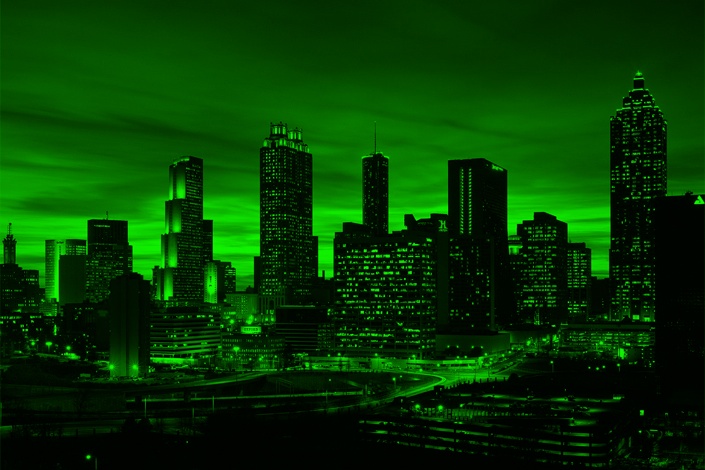
Place of Origin: Atlanta, GA
Notable Artists: Flosstradamus, UZ, Baauer, RL Grime, Salva, Yellow Claw
History/Description: Out of Atlanta’s rap scene emerged trap, a fusion of 808, high-hat, snare and massive bass drops, all heavily incorporating hip-hop rhymes, and specifically the woozy, aggressive output of ATL artists including T.I., Young Jeezy and Gucci Mane. Hitting the electronic music scene circa 2012 and arguably both riding on the coattails of dubstep’s popularity and expanding the prevalence and popularity of bass music, trap offered young producers and club kids—who could never in a million years actually rap—the opportunity to delve into the rap world via electronic production. It was a trend that left in its wake a million party photos of young white dudes doing trap arms. Baauer’s “Harlem Shake” was unavoidable; upstarts like Salva and RL Grime brought the sound to festival stages around the time of the duo’s gloriously hyphy remix of Kanye’s “Mercy”; and acts including Bro Safari and Flosstradamus continue to spread the deliciously dirty sound to audiences around the world. —Katie Bain
Essential Tracks:
Kanye West “Mercy”
Flosstradamus “Rollup” (Baauer Remix)
Baauer “Harlem Shake”
L.A. Beat Scene
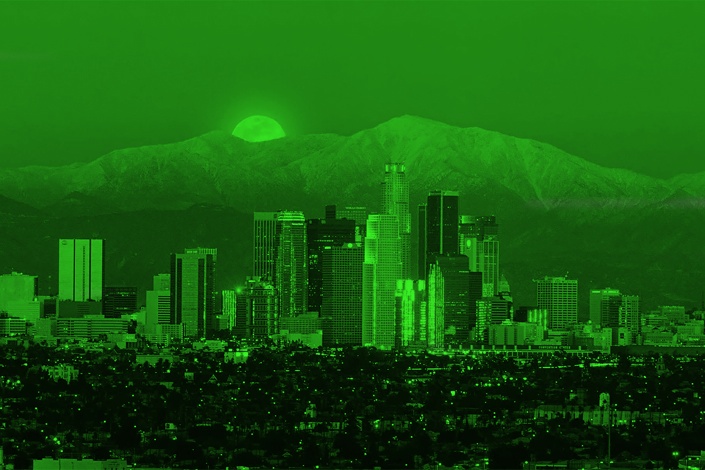
Place of Origin: Los Angeles, CA
Notable Artists: Flying Lotus, Gaslamp Killer, Daedelus, Daddy Kev, Nocando, Nosaj Thing, Tokimonsta, Thundercat
History/Description: Trust that the Airliner, the East Los Angeles dive at which the fabled Low End Theory club night has gone down every Wednesday night for the last nine years, is nothing fancy. And yet the hole-in-the-wall is the spiritual home of the Beat Scene, Los Angeles’ avant-garde posse of envelope-pushing electronic producers known for spacey, deconstructed, electronic sounds steeped in hip-hop. Anchored by Flying Lotus and many of the artists on his Brainfeeder label, the Beat Scene gained traction and international acclaim via an intellectual sound that works at both music festivals and with the NPR crowd. The scene has given rise to artists including the Gaslamp Killer and the Glitch Mob and has hosted guests including Radiohead’s Thom Yorke, all the while expanding to locations including New York, San Francisco and Japan. A music festival featuring much of the Beat Scene crew happens this August 8 (get it, 8/08?) in Downtown L.A. —Katie Bain
Essential Tracks:
Flying Lotus “Flotus”
Nosaj Thing “Fog”
Tokimonsta “Bright Shadows”
Jersey Club
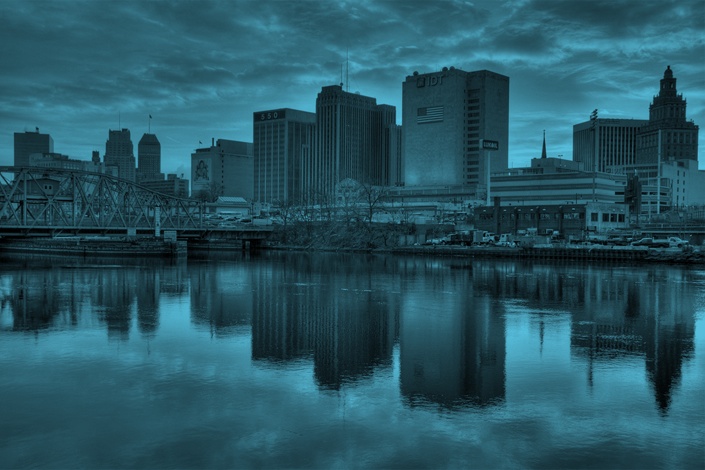
Place of Origin: Newark, NJ
Notable Artists: DJ Sliink, R3ll, UNiiQU3, Brick Bandits, DJ Tameil, Tim Dolla, Nadus
History/Description: The beat of Jersey club is unique to its origin city, taking the angst and oppression of the New Jersey streets to the speakers. Bordering a fine line between urban hip-hop and electronic house, its sonic framework is defined by an unmatched blend of choppy drum work, formed around a foundation of quick-hitting triple kick-drum patterns, a looped repetition of short vocal samples (often of current and classic hip-hop and R&B hits), swift beat switches and unpredictably quick song transitions set to the lightning-fast beat of 140 BPMs. Jersey club grew out of sibling genre Baltimore club from the ‘80s, yet it’s sped up and much bouncier.
Even though Jersey club originated 15 years ago, it is just now breaking through the Brick City limits and catching the global recognition it rightfully deserves via rabid internet fans and major tastemaker media coverage from Spin, The Fader, and the Boiler Room. Today, a new wave of producers—often European and following an animal name theme—is adopting the Jersey club sound into a more accessible version of the genre, including Trippy Turtle, Cashmere Cat, DJ Yolo Bear, Drippy Dolphin, Booty Beaver and many more. These newer acts are helping revive Jersey club with a modern touch for the internet age. —John Ochoa
Essential Tracks:
DJ Sliink “Vibrate”
DJ Tameil “Look at My Butt”
Tinashe “2 ON” (UNiiQU3 REMIX)
Brostep

Place of Origin: Los Angeles, CA
Notable Artists: Skrillex, Datsik, Knife Party, 12th Planet, Zeds Dead
History/Description: Yes, dubstep originated in the UK, but it was a posse of young American dudes dressed mostly in black jeans and T-shirts that took the genre out of the dank basements and dark clubs of Croyden, added a hellstorm of mechanical sound effects and drops to infinity, and rode that tidal wave of bass to massive festival fame in the United States. Coinciding with the rise of electronic dance music in the US circa 2012, brostep—as originated by Skrillex and the like—was a loud and insanely aggressive youth movement call-to-arms announcing that a new generation of producers were taking over the scene and bringing a legion of mostly shirtless, college-age dudes from the American suburbs along with them. While the genre has since been the subject of a lot of shit-talking, with some producers making moves to disassociate themselves from the title, critics would do well to remember that the US electronic scene at large would not likely exist in its current form without all those drops and all those bros who loved them. —Katie Bain
Essential Tracks:
Skrillex “First of the Year”
Knife Party “Bonfire”
Flux Pavilion “Bass Cannon”
Detroit Techno
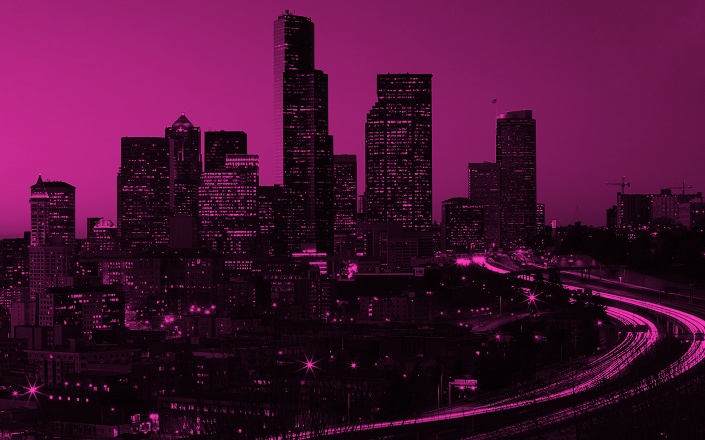
Place of Origin: Detroit, MI
Notable Artists: Juan Atkins, Derrick May, Kevin Saunderson, Eddie Folkes, Carl Craig, Jeff Mills, Richie Hawtin
History/Description: More often than not, the word “techno” is associated with hedonistic tendencies and European prevalence. But in all reality, it’s conception stems from a place that has more of a night-and-day connection with its modern-day perception. Born in the basement of the suburbs of Motor City, Detroit techno followed behind (while some consider it a byproduct of) the mass exodus of Motown and the deadly blow of the declining auto industry. As it were, strife and struggle were heavy in the hearts of the city’s inhabitants, which raised the need for metropolitan kids to find a distraction from the dilapidated state of their hometown.
In comes the Belleville Three, a trio of high school homies Juan Atkins, Derrick May and Kevin Saunderson, who got the show on the road by tinkering with the first iterations of analog synths and drum machines, using them to push the bounds of early electro, funk and the concurrently rising Chicago house scene. The boys basically went against the grain and developed machine-made music rife with an escapist, future-facing mentality that would change the course of club music from that moment on. It was gritty and often darkly driven, with a percussively-rich aesthetic. Of course, the demo at the time was a bit different than is seen now, as gay African-Americans and Latinos dominated the dancefloors like that of the Music Institute.
Across the pond, though, demand for records from labels Metroplex, KMS and Transmat skyrocketed, which drew the bulk of the genre’s popularity to live mostly overseas. Berlin would become a globally recognized hotspot for techno, with venues Tresor and Berghain becoming a mecca for the music. But the genre was still alive and kicking on its home turf, as the second wave of Detroit producers—which include Jeff Mills, Carl Craig and Richie Hawtin—carried the movement on their backs and into the resurgence of the underground currently brewing under our feet at the moment. —Sam Yu
Essential Tracks:
Rhythm Is Rhythm “Strings of Life”
Inner City “Big Fun”
Model 500 “No UFO’s”


